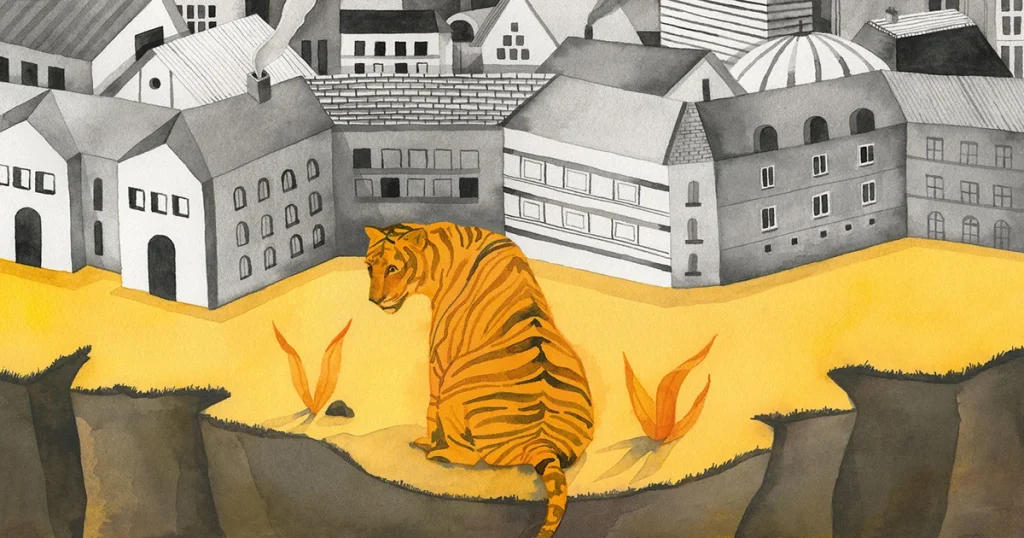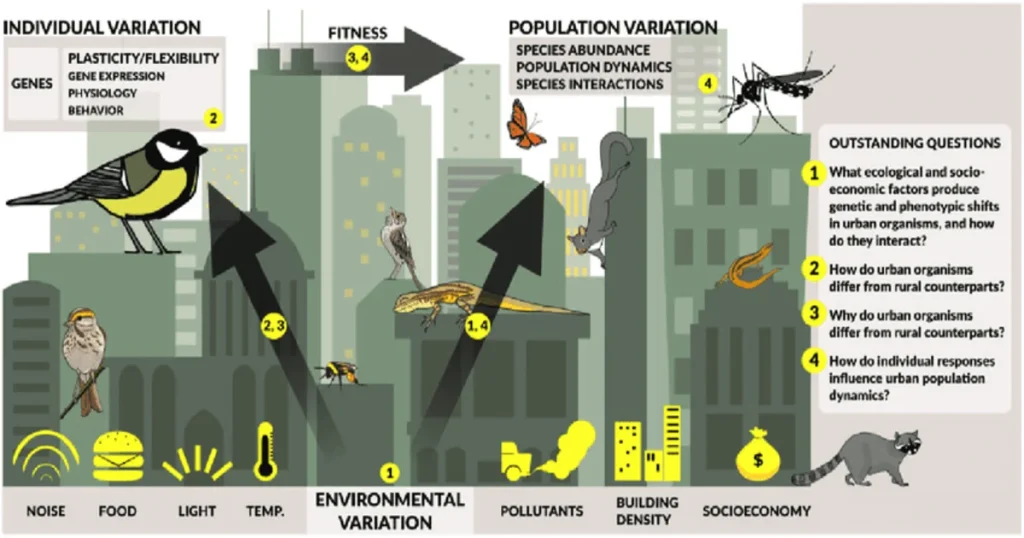Prescott, a charming city known for its rich history and cultural heritage, is undergoing rapid urban development. This transition promises modernity and progress but concurrently raises concerns about the local fauna.

The impact of urban development on Prescott’s fauna is a story of adaptation, challenges, and resilience.
Understanding the MECE Framework
Urban ecology discussions often employ the MECE (Mutually Exclusive, Collectively Exhaustive) framework to ensure a systematic and thorough approach. But what exactly is MECE?
MECE is a principle used primarily in consulting which dictates that data sets should neither overlap (mutually exclusive) nor leave any gaps (collectively exhaustive). In the context of urban development and fauna, it means examining all angles without overlap, ensuring a complete understanding of the subject.
General Impact of Urban Development on Fauna
Urban development is a two-edged sword. While it signifies human progression, its environmental implications can’t be overlooked. The global discourse on urbanization has consistently pointed towards the increasing pressure on wildlife habitats, leading to significant ecological shifts.
In the heart of Prescott, as buildings rise and roads expand, animals face changes in their natural habitats. From disruption of migratory pathways to reduced access to essential resources, the challenges are many.
Yet, amidst this transformation, several species exhibit remarkable adaptability, using these urban landscapes to their advantage. Cities, in fact, are home to more biodiversity than one might presume. A recent study by Nature showed that urban areas when designed consciously, can support a wide variety of species.
Habitats Transformed
Urban sprawl in Prescott has metamorphosed landscapes at an astonishing rate. Vast stretches of native grasslands, once teeming with life, have made way for concrete jungles.
Yet, it isn’t just about the loss of green patches. Water systems have also been greatly affected. The natural streams of Prescott, crucial lifelines for many species, are now often redirected, polluted, or entirely replaced by urban drainage systems.
The World Wildlife Fund suggests that such habitat alterations, if not managed, can lead to long-term ecological repercussions.
Specific Species Affected
Prescott’s fauna, rich and diverse, is feeling the pinch. Birds, especially, face nesting alterations. Urban areas present fewer natural sites for nests, leading many bird species to adapt by building nests in unconventional locations.
Mammals are equally affected. While some like raccoons have become our unexpected neighbors thriving in urban pockets, others face displacement, often leading to tragic road accidents or conflicts with humans.
Reptiles and amphibians, cold-blooded creatures, face thermal challenges due to the “urban heat island” effect. Meanwhile, insects, especially pollinators, grapple with the reduced availability of nectar sources. A report from BirdLife International delves deeper into how these specific species are adapting and what challenges they face.
Positive Effects of Urban Development

Not all is grim. Urban spaces, when thoughtfully designed, can offer a sanctuary for various species. Man-made green spaces like parks and gardens often become habitats for a wide range of creatures. The sound of birds chirping in urban parks is evidence of this urban-wildlife balance.
Additionally, there’s increased human awareness. Urban environments provide an educational platform, allowing residents to observe and appreciate local fauna up close. As per a National Geographic article, such experiences can be pivotal in fostering a culture of conservation.
Challenges Faced by Fauna
Undeniably, urbanization poses challenges. One of the most pressing is habitat fragmentation. As per studies from Conservation International, isolated habitats lead to reduced genetic diversity, threatening species survival.
Then, there’s pollution. While air pollution impacts bird migrations, water pollution affects aquatic species. Soil contamination can disrupt the very base of the food chain. These disturbances can lead to increased human-wildlife conflicts, further straining the delicate balance.
The Noise and Light Factor
The hum of a city, its incessant buzz, affects more than just human residents. Animals rely heavily on sound for communication. Urban noise can mask these calls, affecting mating rituals and predator-prey dynamics.
Light pollution, too, is a challenge. Nocturnal creatures, reliant on the dark, find their routines disrupted by the bright city lights. Dark Sky Association has documented cases where birds, misled by lights, collide with structures, often with fatal consequences.
Urban Design and Its Influence
Prescott’s infrastructure plays a pivotal role in determining fauna’s fate. Roads act as barriers, segregating populations and increasing mortality rates. High-rise buildings with reflective glass become unwitting death traps for birds.
Yet, the power of informed design cannot be understated. By factoring in fauna-friendly designs, we can make urban settings conducive to wildlife. The Urban Land Institute showcases some groundbreaking designs that marry urban aesthetics with ecological sensibility.
Conservation Initiatives in Prescott
Prescott isn’t turning a blind eye. Local bodies and NGOs are working tirelessly to counterbalance the impacts of urban development. From habitat restoration projects to sustainable urban planning, efforts are in full swing to ensure the coexistence of man and animal.
Community-driven initiatives are particularly noteworthy. These grassroots movements amplify the importance of each individual’s role in conservation, proving that change often starts at home.
Recommendations for Balancing Development and Wildlife Preservation
As we envision a modern Prescott, it’s essential to incorporate strategies that prioritize its rich biodiversity.
- Adopt fauna-friendly urban designs.
- Promote public education and community engagement.
- Encourage urban gardening to support native species.
Cities like Portland have made significant strides in this direction, serving as inspirations for a harmonious urban future.
What Can Prescott Learn?
The urban-fauna relationship isn’t unique to Prescott. By studying global urbanization patterns, Prescott can both avoid pitfalls and emulate success stories.

For instance, initiatives in cities like Melbourne emphasize the importance of green corridors, ensuring safe passages for wildlife amidst urban sprawl.
FAQs:
In this section, we will be delving into some of the most common inquiries and curiosities that surround our topic.
How has urban development directly impacted the diet of specific fauna?
Urban landscapes alter food sources, forcing animals to adapt. Some urban areas might offer abundant but not necessarily nutritious food sources, like processed foods for birds.
What are the key species at risk in Prescott?
Species that rely heavily on specific habitats or have limited dietary choices are most at risk. Local studies can offer detailed insights.
How can individuals contribute to minimizing the negative impacts of urban development on local fauna?
Simple steps like planting native species in gardens, reducing light and noise pollution, and supporting local conservation initiatives can make a difference.
Conclusion
The dance between urban development and local fauna in Prescott is intricate and ongoing. As we march towards modernity, the onus is on us to ensure that the city’s melodic chirps and rustles aren’t silenced.
The journey ahead is challenging but holds the promise of a harmonious coexistence. Let Prescott be a beacon, showcasing how urban progress can beautifully coexist with nature’s rhythm.



Leave a Comment
You must be logged in to post a comment.